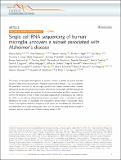| dc.contributor.author | Olah, Marta | |
| dc.contributor.author | Menon, Vilas | |
| dc.contributor.author | Habib, Naomi | |
| dc.contributor.author | Taga, Mariko F | |
| dc.contributor.author | Ma, Yiyi | |
| dc.contributor.author | Yung, Christina J | |
| dc.contributor.author | Cimpean, Maria | |
| dc.contributor.author | Khairallah, Anthony | |
| dc.contributor.author | Coronas-Samano, Guillermo | |
| dc.contributor.author | Sankowski, Roman | |
| dc.contributor.author | Grün, Dominic | |
| dc.contributor.author | Kroshilina, Alexandra A | |
| dc.contributor.author | Dionne, Danielle | |
| dc.contributor.author | Sarkis, Rani A | |
| dc.contributor.author | Cosgrove, Garth R | |
| dc.contributor.author | Helgager, Jeffrey | |
| dc.contributor.author | Golden, Jeffrey A | |
| dc.contributor.author | Pennell, Page B | |
| dc.contributor.author | Prinz, Marco | |
| dc.contributor.author | Vonsattel, Jean Paul G | |
| dc.contributor.author | Teich, Andrew F | |
| dc.contributor.author | Schneider, Julie A | |
| dc.contributor.author | Bennett, David A | |
| dc.contributor.author | Regev, Aviv | |
| dc.contributor.author | Elyaman, Wassim | |
| dc.contributor.author | Bradshaw, Elizabeth M | |
| dc.contributor.author | De Jager, Philip L | |
| dc.date.accessioned | 2021-10-27T19:52:40Z | |
| dc.date.available | 2021-10-27T19:52:40Z | |
| dc.date.issued | 2020 | |
| dc.identifier.uri | https://hdl.handle.net/1721.1/133405 | |
| dc.description.abstract | © 2020, The Author(s). The extent of microglial heterogeneity in humans remains a central yet poorly explored question in light of the development of therapies targeting this cell type. Here, we investigate the population structure of live microglia purified from human cerebral cortex samples obtained at autopsy and during neurosurgical procedures. Using single cell RNA sequencing, we find that some subsets are enriched for disease-related genes and RNA signatures. We confirm the presence of four of these microglial subpopulations histologically and illustrate the utility of our data by characterizing further microglial cluster 7, enriched for genes depleted in the cortex of individuals with Alzheimer’s disease (AD). Histologically, these cluster 7 microglia are reduced in frequency in AD tissue, and we validate this observation in an independent set of single nucleus data. Thus, our live human microglia identify a range of subtypes, and we prioritize one of these as being altered in AD. | |
| dc.language.iso | en | |
| dc.publisher | Springer Science and Business Media LLC | |
| dc.relation.isversionof | 10.1038/s41467-020-19737-2 | |
| dc.rights | Creative Commons Attribution 4.0 International license | |
| dc.rights.uri | https://creativecommons.org/licenses/by/4.0/ | |
| dc.source | Nature | |
| dc.title | Single cell RNA sequencing of human microglia uncovers a subset associated with Alzheimer’s disease | |
| dc.type | Article | |
| dc.contributor.department | Massachusetts Institute of Technology. Department of Biology | |
| dc.contributor.department | Howard Hughes Medical Institute | |
| dc.relation.journal | Nature Communications | |
| dc.eprint.version | Final published version | |
| dc.type.uri | http://purl.org/eprint/type/JournalArticle | |
| eprint.status | http://purl.org/eprint/status/PeerReviewed | |
| dc.date.updated | 2021-07-22T15:44:31Z | |
| dspace.orderedauthors | Olah, M; Menon, V; Habib, N; Taga, MF; Ma, Y; Yung, CJ; Cimpean, M; Khairallah, A; Coronas-Samano, G; Sankowski, R; Grün, D; Kroshilina, AA; Dionne, D; Sarkis, RA; Cosgrove, GR; Helgager, J; Golden, JA; Pennell, PB; Prinz, M; Vonsattel, JPG; Teich, AF; Schneider, JA; Bennett, DA; Regev, A; Elyaman, W; Bradshaw, EM; De Jager, PL | |
| dspace.date.submission | 2021-07-22T15:44:34Z | |
| mit.journal.volume | 11 | |
| mit.journal.issue | 1 | |
| mit.license | PUBLISHER_CC | |
| mit.metadata.status | Authority Work and Publication Information Needed | |
